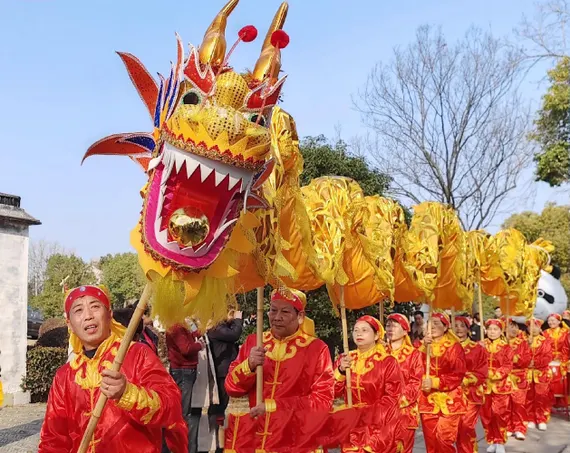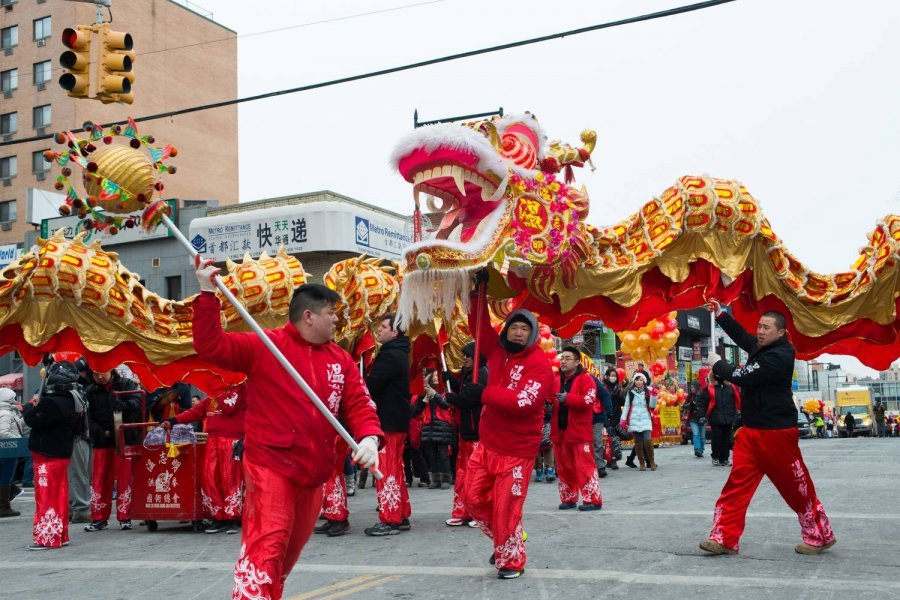The dragon dance, a vibrant and dynamic performance, has its roots deeply embedded in ancient Chinese culture. Historical records suggest that its origins can be traced back over a thousand years, with references found in various texts documenting its significance during the Tang Dynasty (618-907 AD). The dragon, revered as a symbol of power, strength, and good fortune, occupies a special place in Chinese mythology. It is believed that the dragon brings prosperity and auspiciousness to communities, particularly during important celebrations.
Initially, the dragon dance was performed during agricultural festivals to ensure a bountiful harvest. Communities would come together to honor this mythical creature, presenting elaborate portrayals that showcased their artistic skills and reverence for nature’s abundance. As the dance gained popularity, it became a staple of significant cultural events, evolving into a mesmerizing spectacle that attracted viewers from far and wide.
Throughout the centuries, the dragon dance has evolved in style and form, adapting to various regional customs while staying true to its traditional roots. The festivities surrounding the Chinese New Year marked the dance’s most prominent evolution. During these celebrations, vibrant parades featuring long, intricately designed dragon costumes enthralled audiences, symbolizing the dispelling of evil spirits and the welcoming of good luck for the coming year.
The dragon dance is not merely an entertainment form; it is a representation of cultural heritage. As the dance continues to adapt and thrive in contemporary society, it remains a powerful reminder of community, tradition, and the collective beliefs that have persisted over generations. This remarkable evolution illustrates the enduring significance of the dragon as a central emblem in Chinese culture, fostering unity and celebration amidst the rich tapestry of its history.
The Artistic Elements of the Dragon Dance
The dragon dance, a captivating and vibrant performance, showcases a multitude of artistic elements that together create an immersive cultural experience. At the heart of this dance are the elaborate dragon costumes, crafted from materials such as silk, cloth, and bamboo, which contribute to both the visual appeal and the mobility of the performers. The vibrant colors of the dragon are not merely for aesthetic purposes; they convey various meanings. For example, red symbolizes good fortune and success, while green represents wealth and prosperity. These colors are often combined with intricate designs that depict clouds, flames, and other symbols, further embellishing the costumes and enhancing their significance.
The choreography of the dragon dance is another crucial component that reflects the essence of this beloved tradition. Performers work in unison to manipulate the dragon, moving in a fluid, serpentine manner that mimics the grace and power attributed to the mythical creature. The dance incorporates various movements, including swaying, undulating, and leaping, which work together to engage the audience and create a sense of excitement. Each movement is intentional, evoking the strength and majesty associated with dragons, and requires extensive practice to execute correctly. This synchronization amongst the dancers is fundamental, as it allows for the seamless portrayal of the dragon’s dynamic attributes.
In addition to visual elements, the music and instruments play an integral role in the dragon dance performance. Traditional percussion instruments, such as drums, cymbals, and gongs, provide a rhythmic backdrop that energizes the dance. The alternating beats and crescendos evoke a sense of anticipation and excitement, drawing spectators in. The interplay between the movements and the music creates a captivating atmosphere, elevating the overall experience of the dragon dance and allowing the audience to fully engage with this rich cultural celebration.
Cultural Significance and Community Involvement
The dragon dance holds immense cultural significance within Chinese communities and has transcended geographical boundaries to resonate with diverse audiences worldwide. Serving as a powerful symbol of strength, good fortune, and auspicious beginnings, the dragon dance is often performed during important celebrations, including the Lunar New Year and various traditional festivals. These events are more than mere performances; they embody the rich tapestry of Chinese heritage and foster a sense of pride within communities.

One of the most remarkable aspects of the dragon dance is the collaborative effort it requires. Local communities come together to create, manage, and perform the intricate routines, reinforcing bonds among participants. The handling of the dragon costume necessitates teamwork, coordination, and trust, highlighting the nuances of collective effort. This shared experience not only enhances relationships among community members but also encourages younger generations to engage with their cultural roots, ensuring that the art form remains vibrant and relevant.
Various festivals amplify the dragon dance’s role in celebrating cultural heritage. Events such as the Mid-Autumn Festival and the Lantern Festival often feature dragon dances that incorporate local customs, further enriching their cultural context. These performances are not solely for entertainment; they serve as educational opportunities, allowing audiences from different backgrounds to gain insight into the meticulous artistry and symbolism inherent in the dance. Consequently, the dragon dance acts as a bridge between cultures, promoting understanding and appreciation of Chinese traditions among diverse audiences.
By fostering a sense of community involvement and encouraging participation, the dragon dance plays an essential role in preserving and propagating Chinese cultural values. The collaborative nature of the performance not only strengthens local ties but also highlights the relevance of cultural practices in a modern world, ensuring that the spirit of this cherished tradition continues to inspire future generations.
Modern Interpretations and Global Influence
The dragon dance, a vibrant and dynamic performance originating from Chinese culture, has found contemporary interpretations across various global landscapes. Many artists and communities around the world have embraced this traditional art form, injecting modern elements that reflect current societal themes, technological advancements, and diverse cultural influences. As a result, the dragon dance has evolved into a multifaceted performance that not only honors its rich heritage but also captivates contemporary audiences.
In urban centers such as New York City, San Francisco, and Vancouver, dragon dance performances are often featured in festivals that celebrate multiculturalism. These events showcase a fusion of traditional choreography with modern music styles, lighting effects, and innovative stage designs. For instance, some performances incorporate hip-hop rhythms or electronic music, while others make use of multimedia backdrops that enhance the storytelling aspect of the dance. This blending of genres demonstrates the adaptability of the dragon dance, bridging cultural gaps and appealing to a diverse audience.
Moreover, numerous international festivals have included the dragon dance as a highlight, often inviting troupes from around the world to participate. This global recognition not only brings the art form to new audiences but also fosters cross-cultural exchanges among performers. For example, during the Lunar New Year celebrations, communities around the world engage in dragon dance performances as a symbol of good fortune and prosperity, thereby preserving the tradition while contextualizing it within a broader, multicultural framework.
Ultimately, the dragon dance continues to thrive in the contemporary art scene. Its evolution showcases the ability of traditional practices to adapt and resonate with new generations. As this cultural celebration gains global appreciation, it serves as a vibrant reminder of the importance of cultural heritage and its capacity to transcend boundaries, connecting people from various backgrounds through the shared experience of art.
